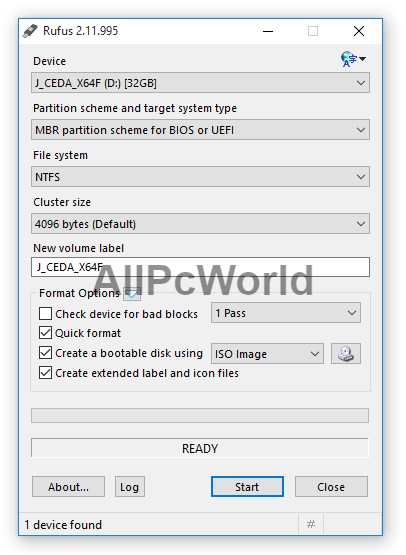
Even so, it is still possible for the mistake to happen if you are careless, so make sure to pay attention to every message that appears before you hit any button.

To prevent users from making the fatal mistake of accidentally formatting the wrong drive, Rufus displays a confirmation message. As for the cluster size, it ranges from 512 bytes to 64 kilobytes. The file systems that Rufus supports are FAT32, NTFS, UDF, exFAT, ext2, and ext3. In the Format Options, you can specify a volume label, choose a file system, and cluster size. The content of the list includes a number of choices non bootable, MS-DOS, FreeDOS, Disk or ISO image, Syslinux 4.07, Syslinux 6.04, ReactOS, Grub 2.04, Grub4DOS 0.4.6a, and UEFI:NTFS. Alternatively, click “Show advanced drive properties” and click again on “List USB Hard Drives”.īelow the Device menu is another drop-down list called Boot Selection.

If the USB drive is not detected, you can try pressing the Alt + F shortcut that will display all of the available USB drives.
#RUFUS SOFTWARE PC#
The navigation structure is clear so it is easy to locate the thing that you need.Īfter you connect a USB drive to a PC where Rufus is running, the free tool will automatically detect and display the name of the drive, as well as its total capacity, in the drop-down menu of Device. Rufus has a simple, intuitive interface that lists all of its features in a neatly arranged layout, which is divided into three main areas (Drive Properties, Format Options, and Status).


 0 kommentar(er)
0 kommentar(er)
